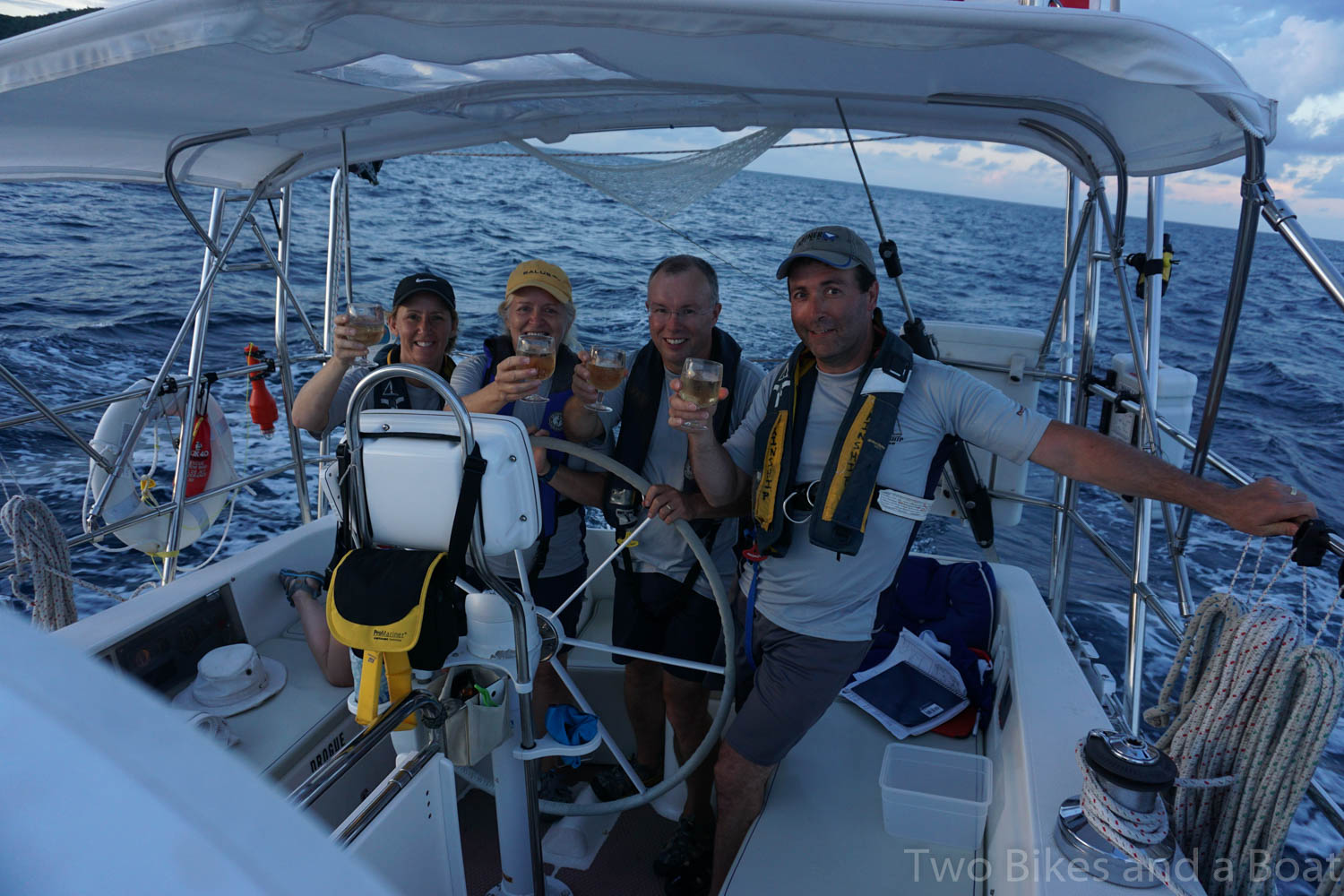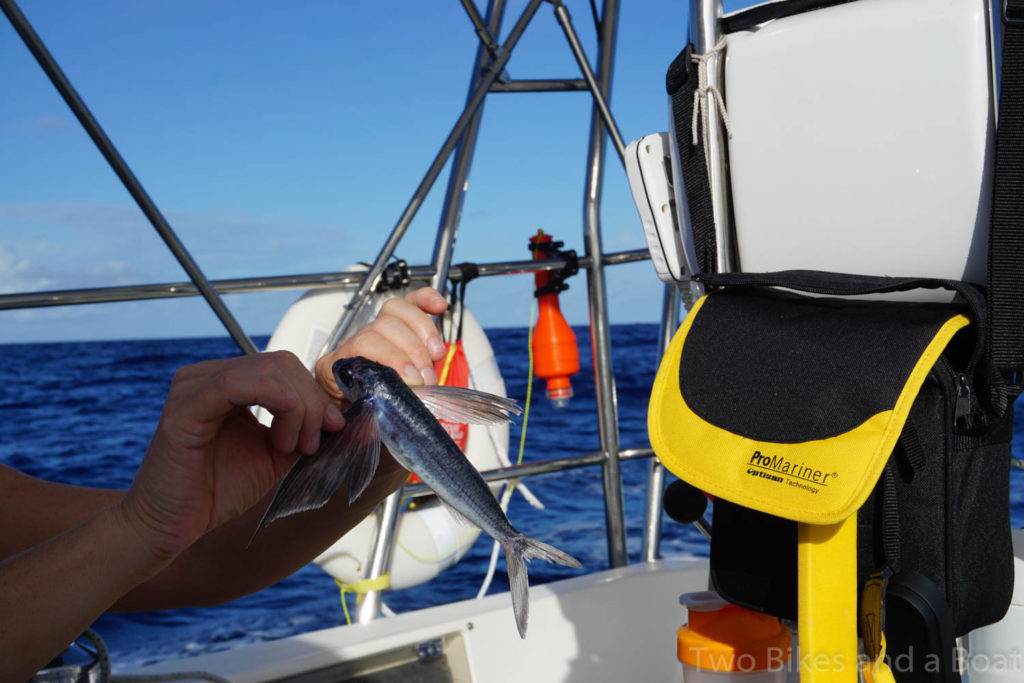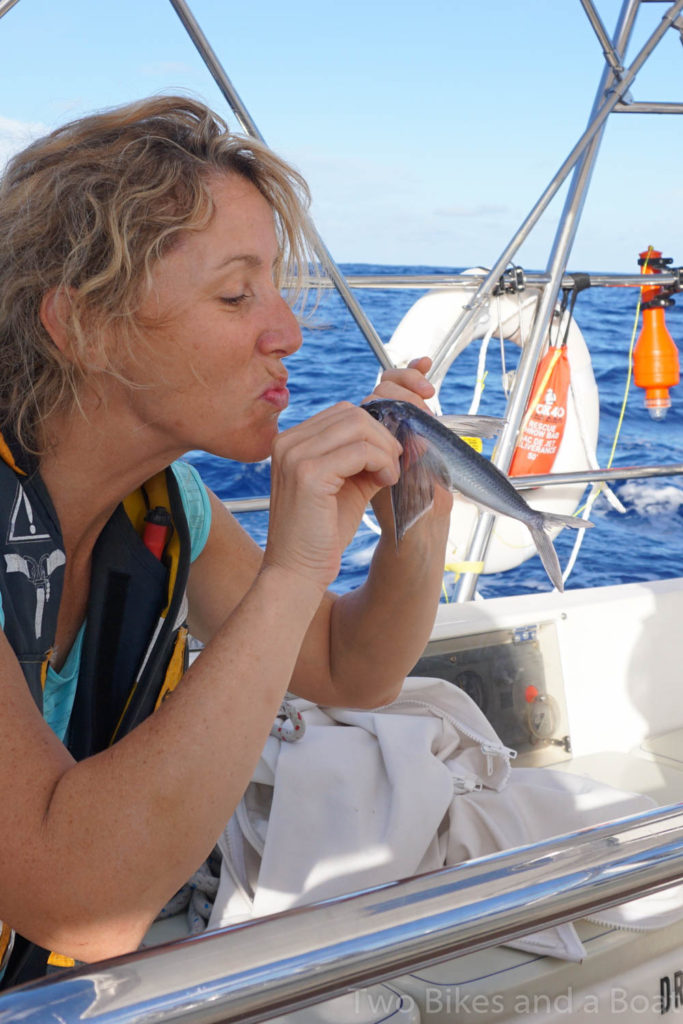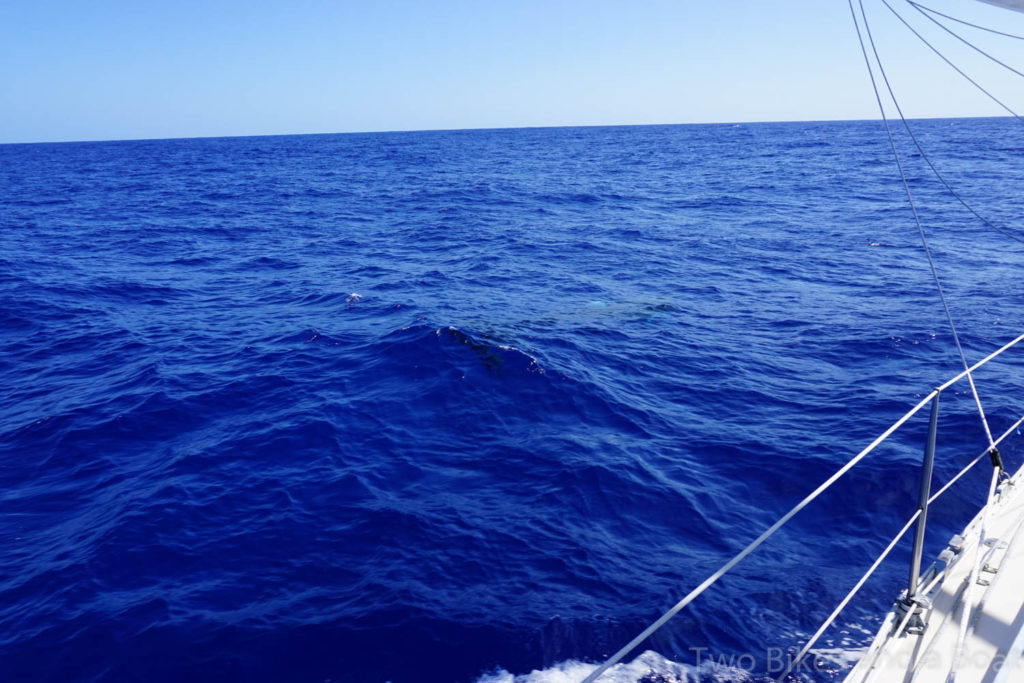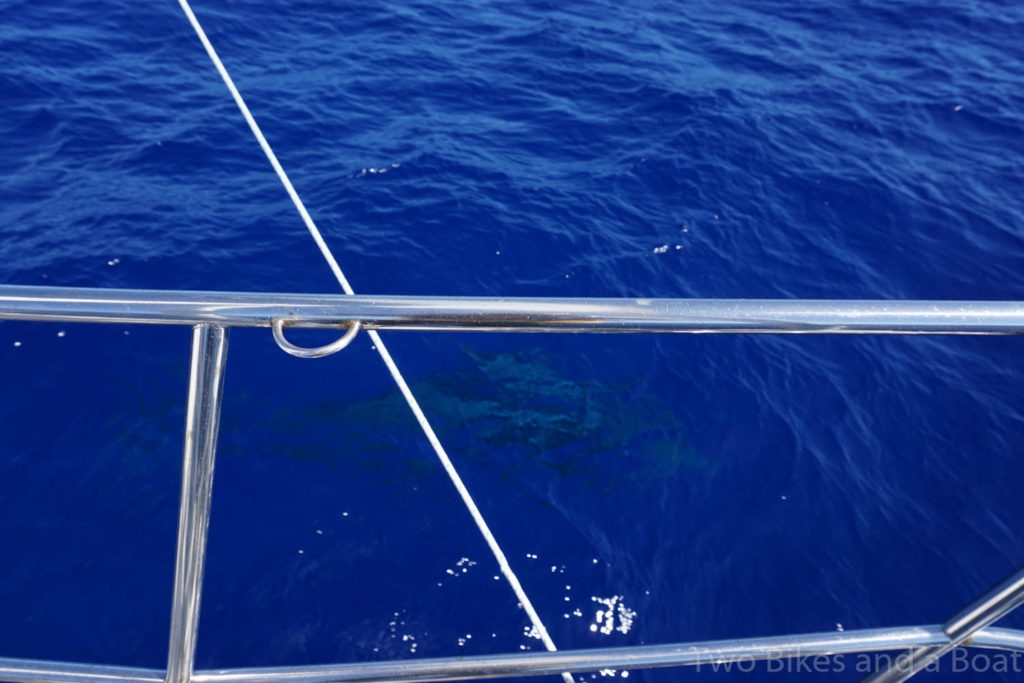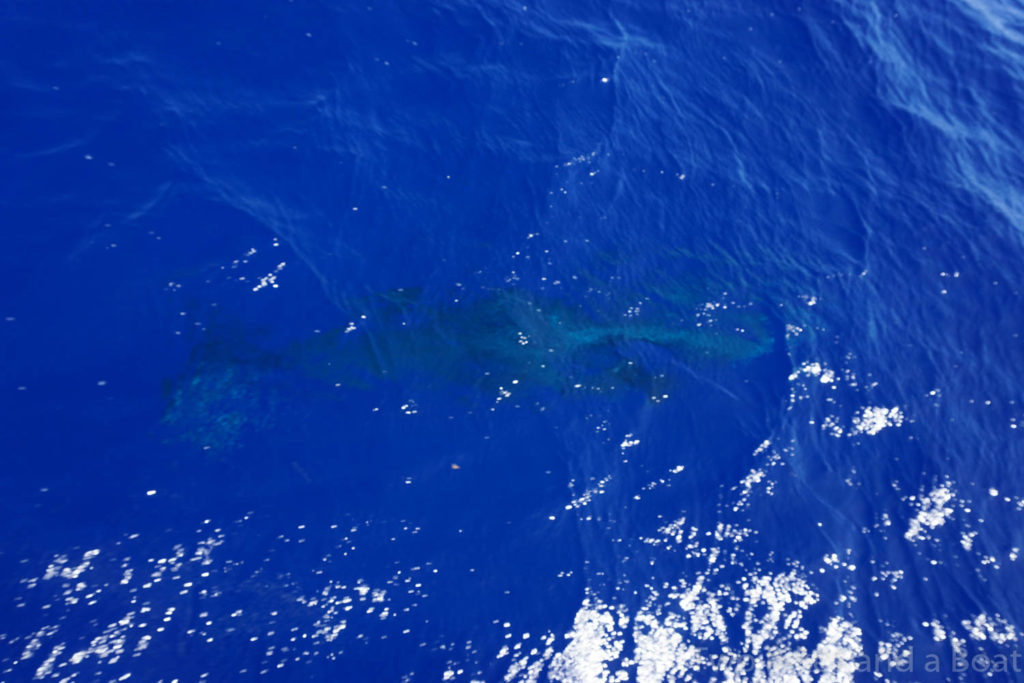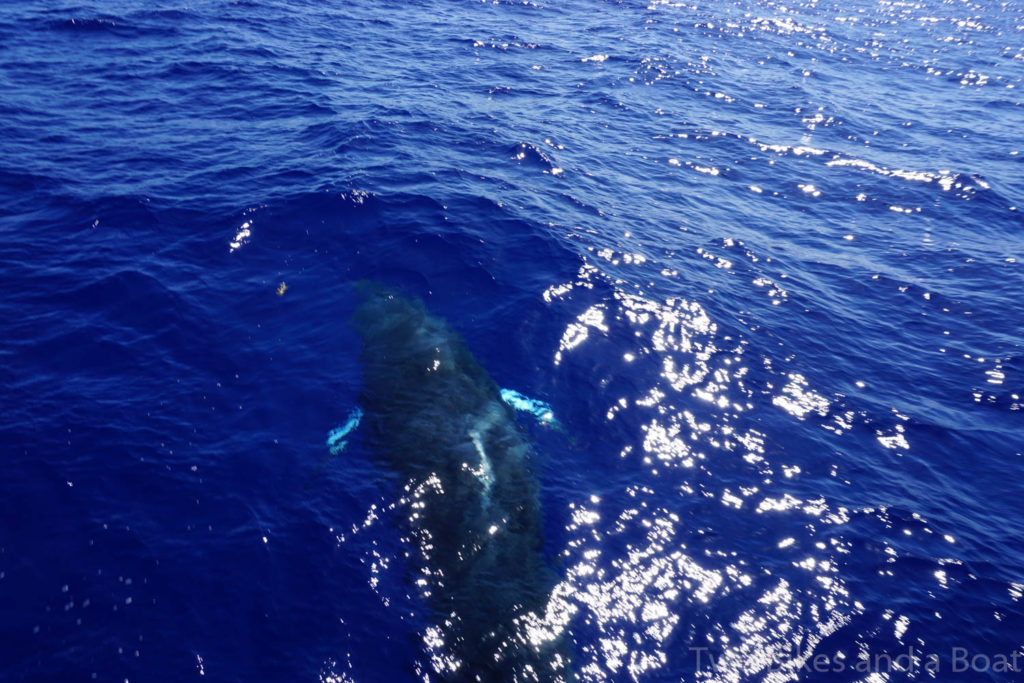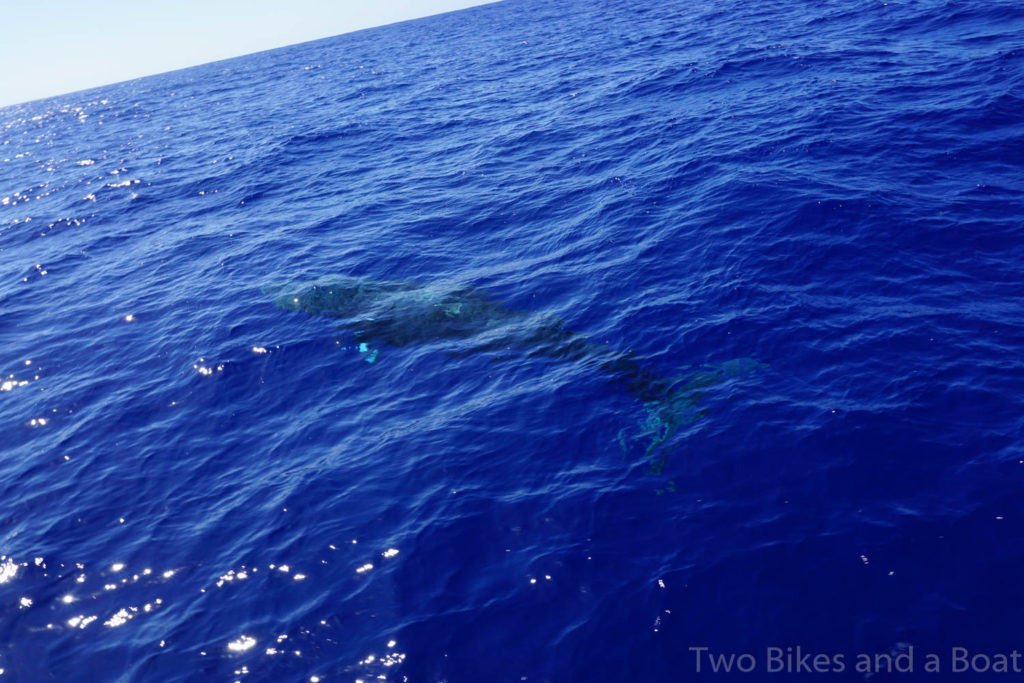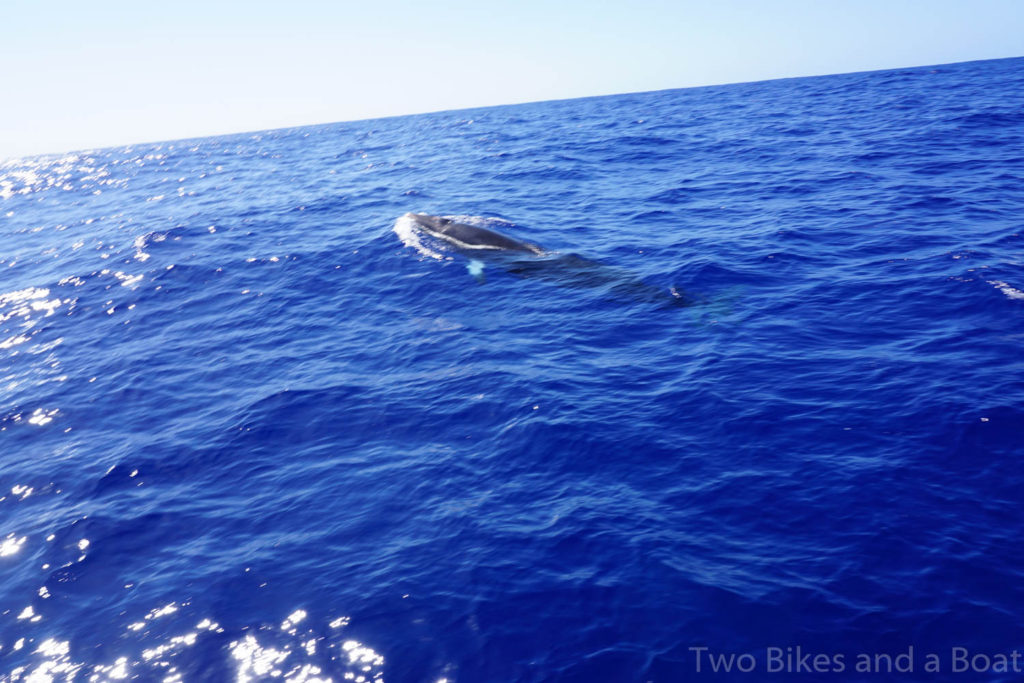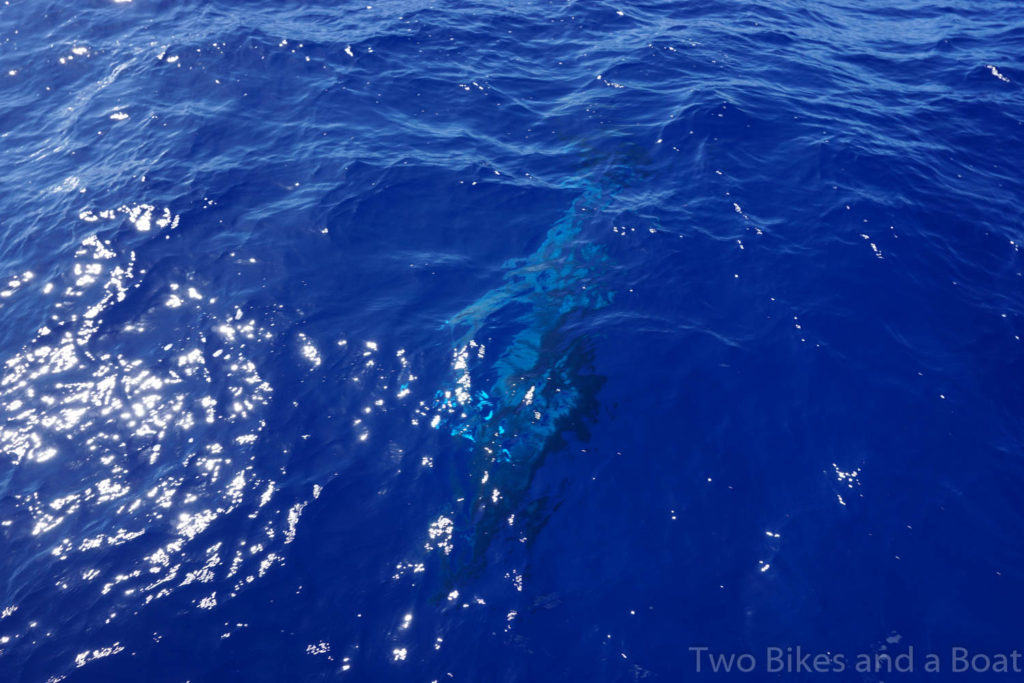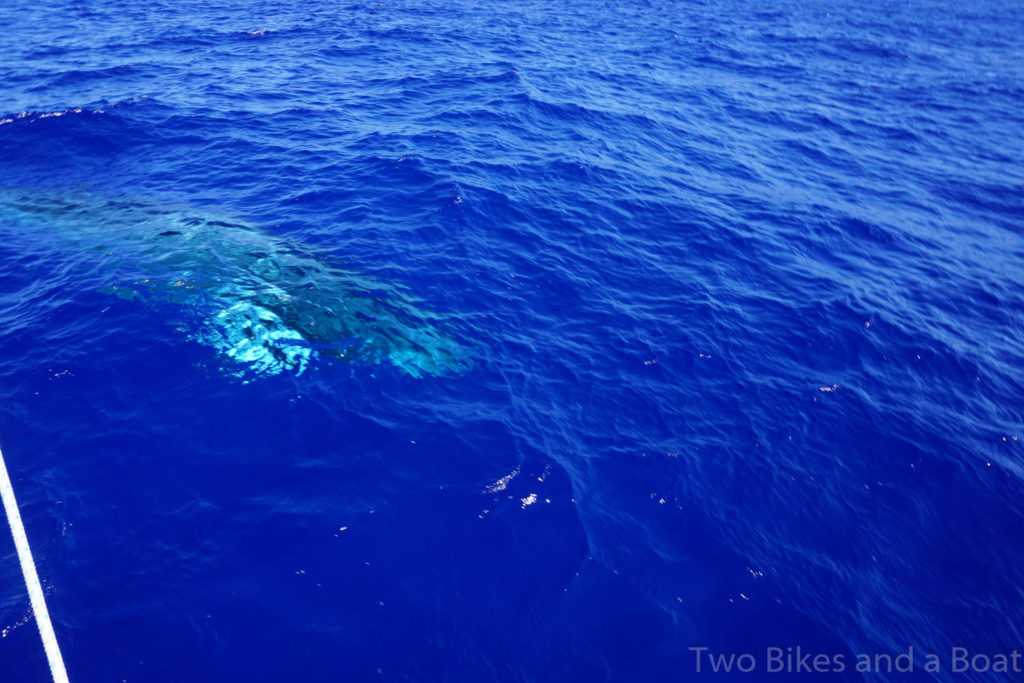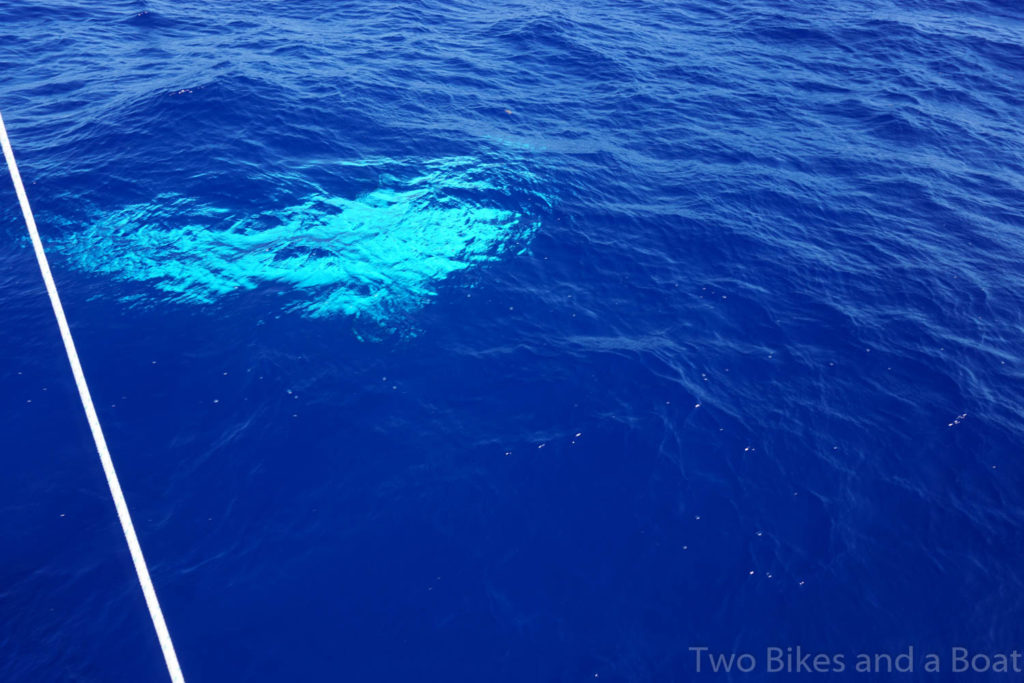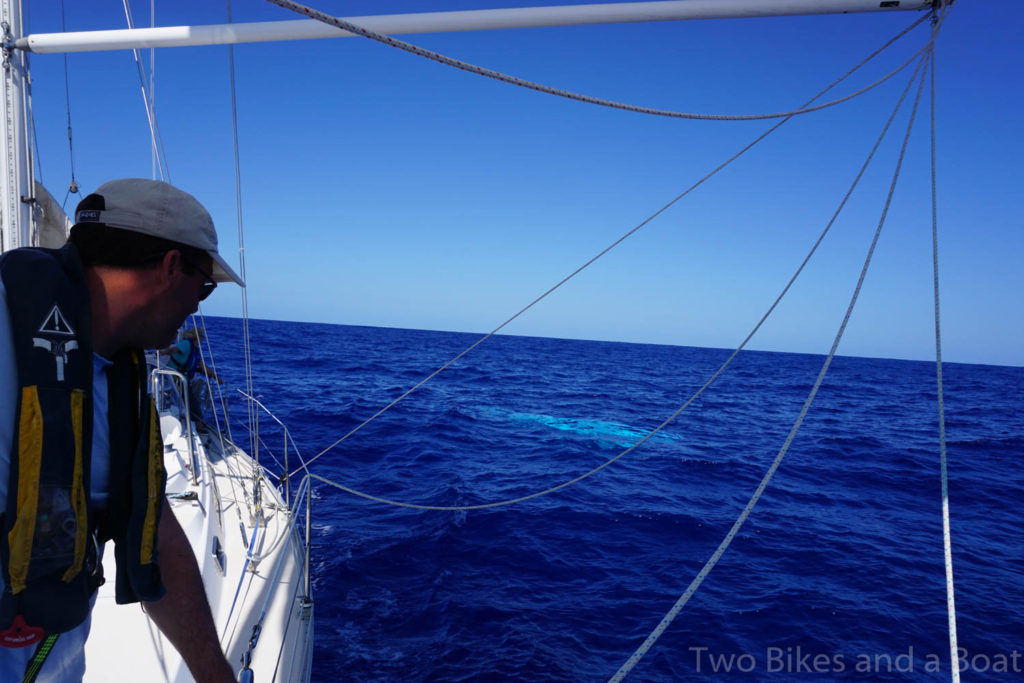The Caribbean 1500 left harbour a day early, why? This was due to the passing of a cold front. This gives favourable conditions to cross the gulf stream. If we did not leave on Saturday, we would have to wait for the next front to pass 4-6 days later.
From Portsmouth, the gulf stream is close to the coast and we headed south to cross the stream east of Cape Hatteras. This path gave us about 48 hours to reach and cross the stream. With the cold front we had north winds to speed our passage south, or at least we should have had, we ended up motoring shortly after the start as the wind dropped to 2-5 knots. Eventually the winds filled in and we were able to sail across the stream. The next 3 days we had downwind sailing in quite big seas and winds in the 20-30 knots range. There were a couple of gales in the area of Bermuda that sent large swells south during most of the passage.
The first 2-3 days on the passage were all about finding a rhythm, sleep and watch hours become the major focus. With the boat moving about on the large seas and plenty of wind, it took time for us all to settle in. With Kathleen the only one of us happy to work below deck, at least for the first few days, she took on the lions share of the galley and SSB work, providing us with great food to keep hunger and sea sickness at bay and giving us information about the fleet from the SSB nets. Although she was out of the watch rotation she also took an early morning relieve watch that enabled Paul, Lisa and I to get an extra few hours of sleep every 3 days. This worked really well with the 3 on, 6 off watch pattern.
From day 3 on we had mixed conditions, never over 25 knots, but often low enough to have us motor. On a passage the hours pass slowly, but the days pass quickly, by day 4 we had a good rhythm and the boat ran smoothly with no issues. We had a couple of calm days where personal hygiene was the focus and we all felt better for a shower and some clean clothes. The visit from the Whale and the flying fish mystery kept us entertained and the days really did pass quickly.
We arrived at the finish with another boat, Yarona and ended up motoring with them just ahead to the finish line.
Here we are celebrating the finish with the traditional ginger ale.
For the record we came DFL on handicap, but I am fine with that, we had a much smoother ride and an easier passage than the boats that stayed east of the rhumb line.
We arrived close to sunset and we had a great run down Tortola to Nanny Cay with the full moon raising behind us.
We arrived at about 7:30pm, greeted by the Caribbean 1500 staff with rum punch all round.
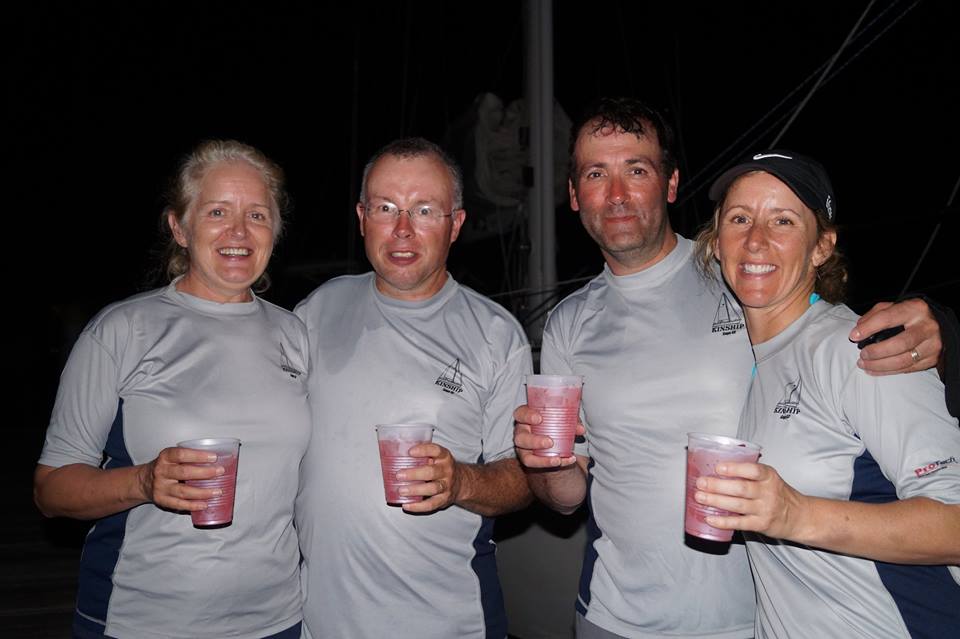 I don’t remember feeling as tired as we all look, but the camera does not lie!
I don’t remember feeling as tired as we all look, but the camera does not lie!
The next few days we spent relaxing at Nanny Cay, catching up with crews on the other boats, a bit of swimming, a bit of happy hour and a few boat jobs. The marina is very well sheltered, but that meant it was tough to work on the boat due to the temperatures, so more happy hours, less jobs was the order of the day.
After a few days, we bid our crew, Paul and Lisa farewell as they headed out to look for a catamaran to buy, they are spending a week or two in the Caribbean as they get serious about buying a boat. We could not have done this trip without them, thanks Paul and Lisa!
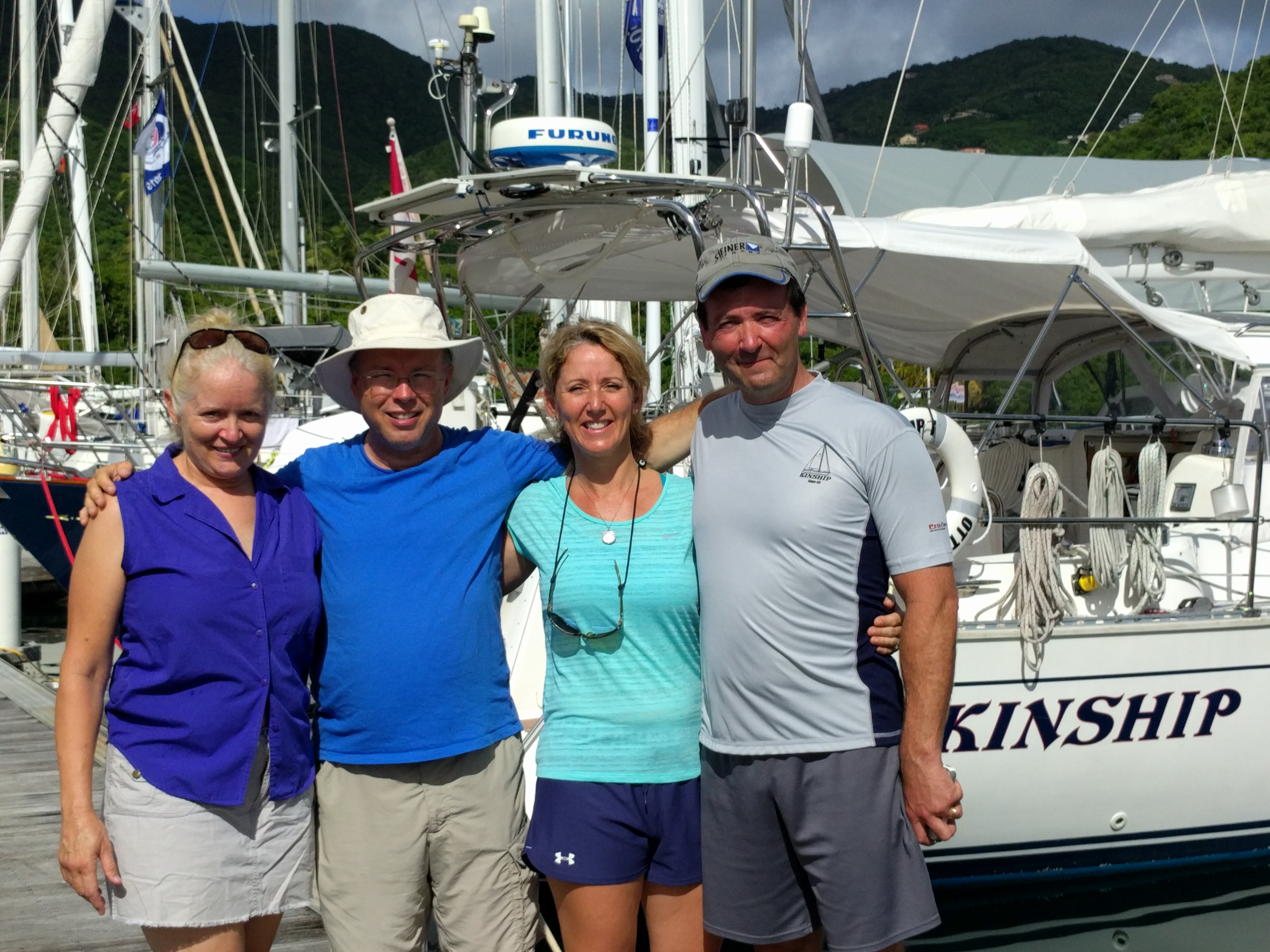 Kathleen’s efforts were rewarded at the prize giving, Andy and the team felt that she was the “Best Galley Slave of the Rally” She got a great gift certificate from one of the local supermarkets that came on board as a sponsor.
Kathleen’s efforts were rewarded at the prize giving, Andy and the team felt that she was the “Best Galley Slave of the Rally” She got a great gift certificate from one of the local supermarkets that came on board as a sponsor.
After the prize giving we had a dinner with all the crews. The Canadian boats were all at the same table, here are the crews of Kinship, RC Wings from Ontario and Caffe Latte and Ambition from Quebec.
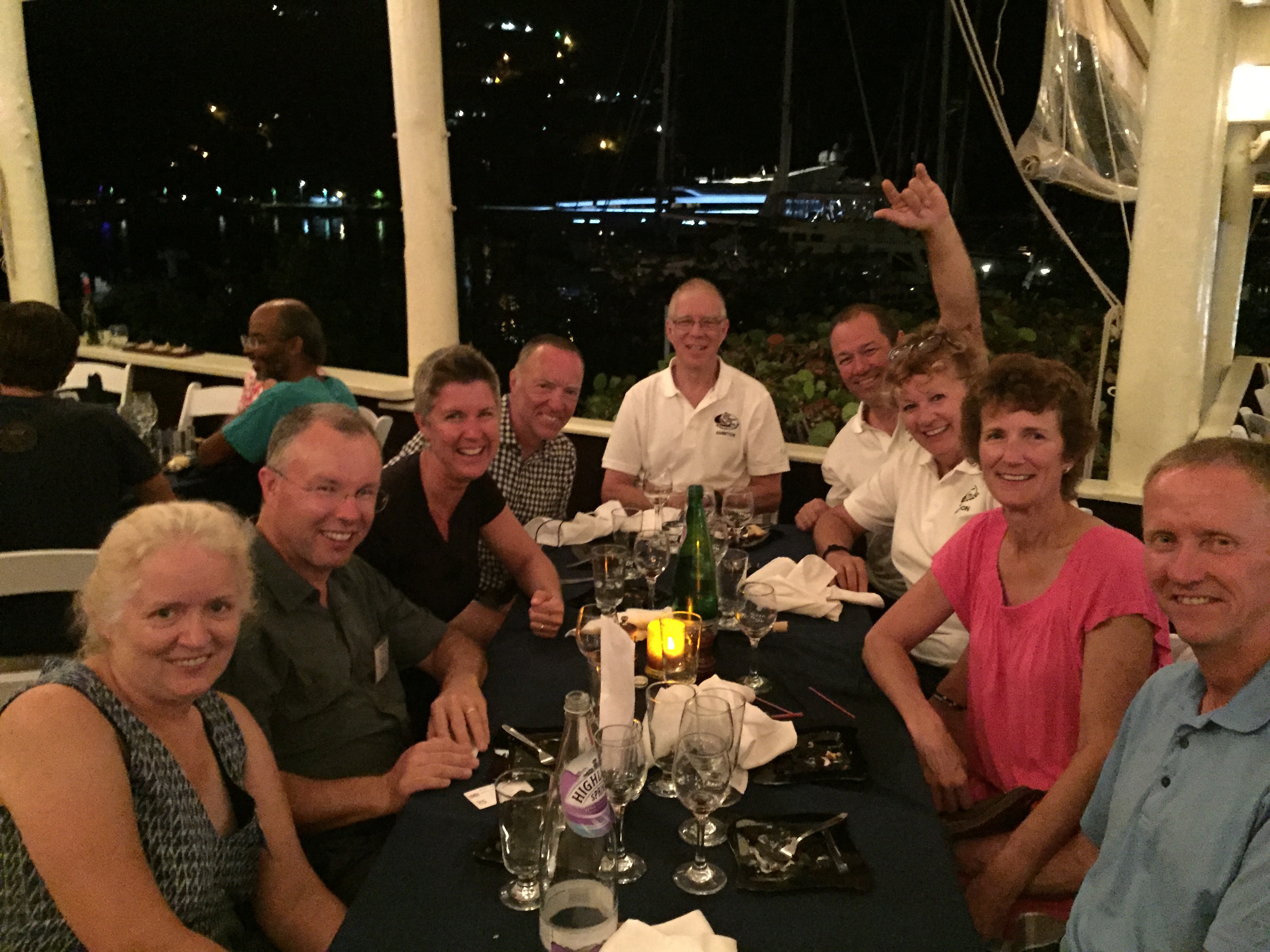 We are looking forward to meeting up with the all of the Caribbean 1500 boats over the winter, but especially the Canadian boats.
We are looking forward to meeting up with the all of the Caribbean 1500 boats over the winter, but especially the Canadian boats.


